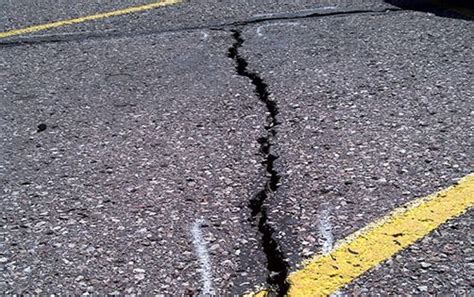
Seal or Fill the cracks
While the terms crack sealing and crack filling are typically used to mean the same thing, there are some distinct differences between the two types of crack repairs in pavement. Understanding the differences will help you to make the correct and most cost-effective choice for a long-lasting solution for your cracked asphalt surfaces.
Crack sealing
Crack sealing is a method where a heated sealant is applied to cracks to prevent moisture from getting in and causing further damage and additional cracking.
Understanding crack sealants
Crack sealants are made of a rubber compound that has both the ability to seal the crack while remaining flexible enough to move with movement of the pavement.
Crack filling
Crack filling is the method whereby an asphalt emulsion is injected into cracks to both reduce water infiltration and to reinforce the pavement. Often this asphalt emulsion is heated to help in the application process and provide a better seal.
Here we’ll list and briefly describe common types of cracks. Before knowing which method is best for your situation, a little knowledge of the various types of cracks in asphalt pavement is helpful. Before choosing which method of repair is best for treating your pavement cracks, it’s critical to understand the various types of cracks that can occur:
- Transverse cracks
A crack that extends perpendicular to the direction the pavement is laid. For example, across a road or driveway. These are generally caused by thermal shifts and are generally the first to appear. - Longitudinal cracks
Longitudinal cracks run parallel to the direction the pavement is laid. Example, in-line with the road or driveway. These are caused by poor lane join construction, shrinkage of pavement, hardening of asphalt and temperature variations. - Edge cracks
Edge cracks develop between the edge of the pavement and concrete curbs. These cracks are caused by seasonal thaw cycles that result in widening and deepening the crack. - Seam cracks
Seam cracks develop along the joints of the pavement. These are generally due to poor paving procedures - Block cracks
Block cracks develop in square chunks that are typically spaced between 4 to 12 feet. They often appear at the end of the pavement life. These are caused by age, improper initial construction of base or lack of proper drainage. - Reflective cracks
These are cracks that form due to overlaying asphalt pavement over top of another unstable base. Movement in the sub-base causes the surface material to crack. Correcting sub-base first can help eliminate reflective cracks. - Alligator cracking
Alligator cracking is a series of interconnecting cracks that are extensive, close together and resemble an alligator’s skin. These are caused by deterioration in the asphalt from extensive traffic.
Choosing the right method of crack repair
When deciding whether to seal or fill a crack, the best option is to speak to a professional. They will carefully evaluate the type of crack and best method of repair.
Western States Sealcoating and Striping has two locations, one in Spokane, and the other in Colville, Washington. They concentrate on crack filling, sealcoating, and asphalt striping services throughout Eastern Washington and North Idaho. With a legacy of excellence since 2000, they’ve earned the trust of their community as the go-to experts for asphalt repair and maintenance. Visit their website at https://sealcoatingspokane.com or give them a call at 509-924-4335.




